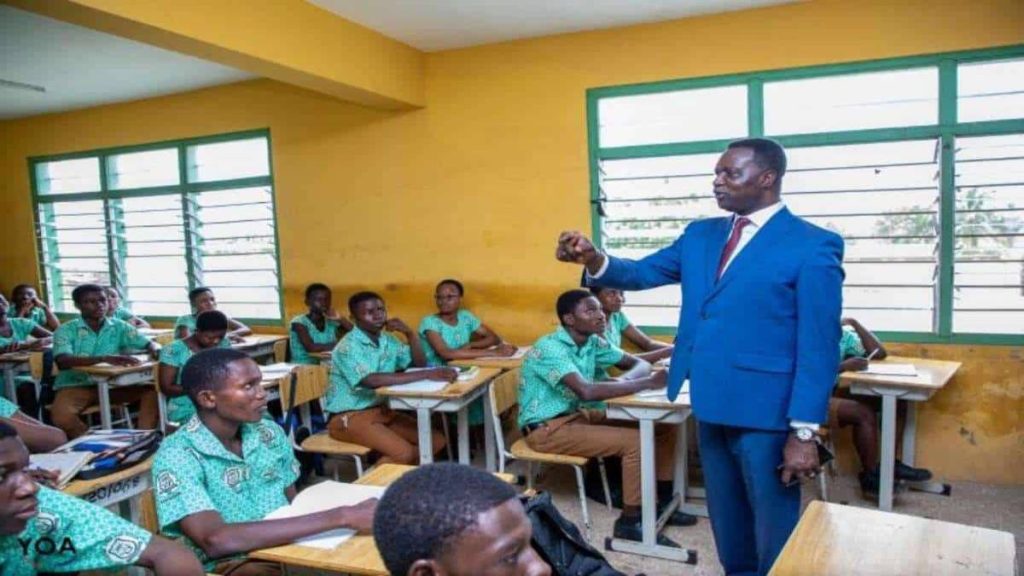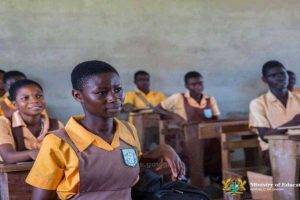MoE to issue guidelines on how SHS students must keep their hair

Guidelines on how second-cycle school students may keep their hair will soon be issued, the Public Relations Officer for the Ministry in Charge of Education (MoE), Hashmin Mohammed, has disclosed.
In an interview monitored by Pretertiary.com, the spokesperson for the Ministry of Education said the new guidelines for the approved hairstyle for students will be issued across all education boards.
Speaking on Accra-based StarrFM’s Morning Starr with host Joshua Kodjo Mensah to Hashmin Mohammed, the guidelines will specify acceptable hairstyles and conditions for exceptions.
According to the Education Ministry spokesperson, prospective students with medical conditions or extraordinary circumstances could have their cases reviewed by school administrators.
He explained that the hair policy did not originate solely from the Ministry of Education and the Ghana Education Service, but emerged from proposals by school administrators across the country seeking uniformity.
“Personally, I see nothing wrong with school administrators calling for uniformity… and the requirement for how students must style their hair,” the Head of Public Relations told the host of StarrFM’s Morning Starr.
He indicated that the introduction of the no-fancy hairstyle and long hair policy is part of broader efforts to maintain discipline and proper conduct among Senior High School students and also to ensure uniformity.
The guidelines on approved hairstyle for students in Senior High Schools follow the Minister of Education, Haruna Iddrisu’s directive for the Ghana Education Service to ban fancy hairstyles and long hair in secondary schools.
Speaking at the Mawuli Senior High School’s 75th anniversary in the Volta Region on Saturday [Oct 25, 2025], the Education Minister said the education authorities were not going to tolerate any long hair “today or tomorrow” and added the secondary school environment was not a place for a beauty contest.”
“There is an ongoing debate about haircuts, and size and length of hair in secondary schools. We will not tolerate it today or we will not tolerate it tomorrow, in so long as molding character. If we give in to hair today, tomorrow it will be shoes, and the next day it will be the way they [students] dress,’ he stated.
The Minister for Education added, “Therefore, as part of our disciplinary measures, headmasters and GES, you are accordingly empowered to take full control of how students behave on your campuses.”
So anybody who thinks that your child will walk into any institution of learning, as if that child, forgive my words, was to attend a beauty contest, the school environment will not for that purpose and not cut for that purpose and we will not tolerate that as an institution.”
Meanwhile, former Minister for Education, Dr Yaw Osei Adutwum, has said the ban on controversial hairstyles and long hair in second-cycle schools is about hygiene and safety and not about discipline.
In an interview monitored by Pretertiary.com, the Education Minister said the motive behind the directive for students to cut their hair must be rational and considerate of students’ well-being.
“We sometimes think we are the adults and they are the children, so we force certain decisions on them without proper engagement,” he stated, adding that “We see it as discipline, but in reality, the hair issue is about hygiene and safety.”
The immediate past Education Minister explained that the rule on haircuts was historically introduced to help maintain cleanliness and ensure students devoted time to their studies, not as a form of punishment.
“When schools make rules that students must cut their hair, it’s not about discipline. It’s because not everyone has the luxury to keep their hair neat all the time,” Dr Yaw Osei Adutwum stated.



